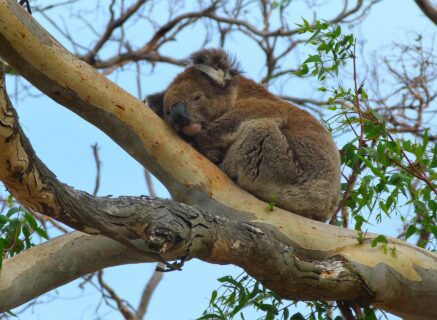
Radio-tracking Wildlife with Wildlife Drones
Improving wildlife conservation
Revolutionising Wildlife Tracking with Drone-Based Telemetry
Wildlife Drones specialises in the development and deployment of drone-based radio-telemetry technology for wildlife conservation and research.
At Wildlife Drones, we work with researchers, conservationists and ecologists from all around the world.
Tracking wildlife and understanding their movements is vital to informing conservation efforts. That is why our innovative wildlife monitoring technology is here to help you collect the data you need so you can make those important decisions. Our innovative approach combines the precision and versatility of drones with specialized sensors and software to gather valuable data on animal behaviour, movements, and habitat usage.
HOW IT WORKS

Why Choose Wildlife Drones?
- Advanced Drone Technology: Our drones are equipped with our innovative VHF telemetry receiver, Dragonfly, enabling precise detection and tracking of wildlife fitted with VHF transmitters. This technology enhances the efficiency and accuracy of animal monitoring efforts. With Wildlife Drones, you can track up to 40 radio-tagged animals simultaneously, maximizing data collection efforts.
- Comprehensive Coverage: Traditional manual tracking methods often face limitations in coverage range. Using drones you can access remote or hard-to-reach locations, including dense forests, rugged terrain, sea caves and ridgelines. This mobility allows for comprehensive surveys of habitats and migration routes.
- Real-Time Data Collection: Our telemetry system enables real-time data collection, providing immediate insights into animal movements, behaviour, and habitat usage. This timely information empowers researchers to make informed decisions and adapt conservation strategies as needed.
- Efficiency and Safety: By utilising drones for wildlife tracking, researchers can significantly reduce fieldwork time and mitigate safety risks associated with ground-based tracking in hazardous environments. Our technology enhances efficiency, allowing for more focused data analysis and conservation efforts.
- Cost-Effective Solutions: Wildlife Drones’ drone-based telemetry system offers a cost-effective alternative to traditional tracking methods, eliminating expenses associated with travel, labour-intensive fieldwork and boat rentals. With Wildlife Drones, you can achieve more with less effort and resources.
Real-world Results: Case Studies in Drone-based Wildlife Monitoring

Tracking Myotis bats at roosts with the California Dept. of Fish and Wildlife
The California Department of Fish and Wildlife utilised Wildlife Drones’ telemetry system to track Myotis bats at roosts. Our technology enabled researchers to overcome the challenges of tracking small creatures in rugged terrain, providing crucial data for bat conservation efforts.

Radio-tracking Northern Bobwhites
With Wildlife Drones’ you can empower your team to cost-effectively collect more radio-telemetry data, more often and with less effort. It’s the world’s most advanced tracking solution for locating tagged animals in real-time.

Radio-tracking Burmese Pythons
Wildlife Drones technology allows researchers to track up to 40 uniquely tagged snakes simultaneously, while also surveying large areas via the air, saving the field team a huge amount of time and effort.

Radio-tracking Giant Hornets
Washington State Department of Agriculture is using Wildlife Drones’ telemetry system to radio-track Giant Hornets in the region. By utilising cutting-edge technology, researchers can gain valuable insights into the behaviour and movements of these invasive insects, informing targeted management strategies.
Discover the Power of Animal Monitoring with Wildlife Drones
In the world of wildlife conservation, understanding the movements and behaviours of animals is crucial for their protection and preservation. At Wildlife Drones, we’ve partnered with Copperhead Consulting to track endangered microbats, shedding light on their elusive habits and habitats. Through innovative technology and strategic collaboration, we’re uncovering invaluable insights into the lives of these fascinating creatures, aiding conservation efforts worldwide. Additionally, our CEO and founder, Dr Debbie Saunders, shares compelling results from our bat tag testing, demonstrating the effectiveness and precision of our tracking solutions. Join us on a journey to unravel the mysteries of bat tracking and make a meaningful impact on bat conservation.
Case Studies
Better data,
better results
At Wildlife Drones, we understand that tracking and monitoring endangered species is essential to securing their future. Not only can we gain unique insights into animal behaviour and habitat use, but we can also uncover greater environmental issues at stake.
However, collecting this vital data can be a challenge. Up until recently, wildlife tracking and monitoring has largely been a physically intensive job that often doesn’t guarantee results.
Luckily with Wildlife Drones, efficiently collecting quality animal movement data is now possible. Speak to our team to learn how our wildlife monitoring technology can help you achieve better wildlife conservation and management outcomes.

Be a gamechanger in wildlife conservation
Do you want to make positive change? We are passionate about empowering people to adopt new technology to help solve the biggest conservation and environmental challenges facing our planet.
If you are interested in using Wildlife Drones for a future research project and are applying for funding, get in contact with us to learn about how we can contribute to your grant application.

Track up to 40
animals simultaneously
Rapidly track over
tricky terrain
Minimise animal and
habitat disturbance
Improved staff safety
Reliable, real-time data to inform on-ground action
Create a high point to
maximise tag detection
whenever needed
Collect more data, more often









